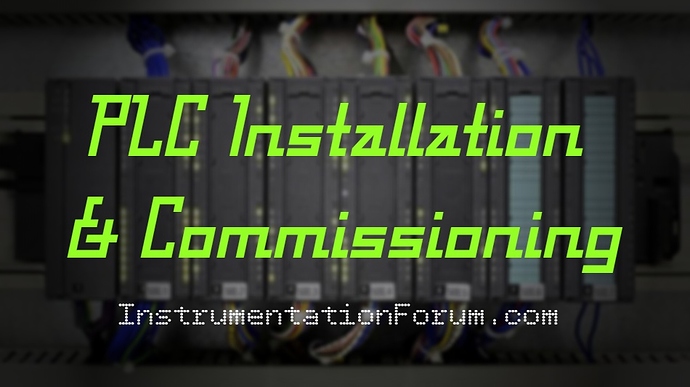PLC Installation, Commissioning and Recommendations
Typical installation
- Typical installation (enclosure, disconnect device, fused isolation transformer, master control relay, terminal blocks and wiring ducts, suppression devices).
- Spacing controllers – follow the recommended minimum spacing to allow the convection cooling.
- Preventing excessive heat (0–60?) C
- Grounding guidelines.
- Power considerations.
- Safety considerations.
- Preventive maintenance considerations.
Commissioning and testing of a PLC system
- Checking that all cable connections between the PLC and the plant are complete, safe, and to the required specification and meeting local standards.
- Checking that all the incoming power supply matches the voltage setting for which the PLC is set.
- Checking that all protective devices are set to their appropriate trip settings.
- Checking that emergency stop button work.
- Checking that all input/output devices are connected to the correct input/output points and giving the correct signals.
- Loading and testing the software.
- Testing inputs and outputs
- Input devices can be manipulated to give the open and closed contact conditions and the corresponding LED on the input module observed. Forcing also can be used to test inputs and outputs. This involves software, rather than mechanical switching on or off, being used with instructions to turn off or on inputs/outputs.
Testing Software
Most PLCs contain some software checking program. This checks through the installed program and provides a list on a screen or as printout with any errors detected.
